This year has been quite a good one for Nessie sightings, with six so far.
The latest, on October 11 by a mother and daughter walking on the banks of Loch Ness, describes a mysterious black lump, appearing and disappearing.
Their description has eerie similarities with a sighting 30 years ago this month, by a retired forestry worker in Invermoriston.
In December 1992 Jockie Thomson, 65, told the P&J he had never seen anything like it in 40 years living by Loch Ness.
Thick dark mass
A huge head rose time and time again out of the loch- each time revealing a thick dark mass below.
Jockie was cleaning out a water tank behind his cottage at Primrose Bay, south of Invermoriston on Monday lunchtime when Nessie popped up.
He said he watched it for three minutes from about a quarter of a mile away as it headed slowly towards Fort Augustus.
Big black round head
“It had a big, black, round head which was visible all the time and every 10 yards or so it would rise itself about 4ft out of the water.
“Under the head there was a thick, dark neck.
“It is difficult to say exactly how big it was, but this was definitely something of a great size.”
He ran to his home for binoculars, but when he emerged Nessie had gone.
Jockie, who had just retired after 34 years with the Forestry Commission, insisted it wasn’t a deer, a large bird or a log.
“No way,” he said.
“I know there will be a lot of people who are not going to believe me but I am positive about what I saw.
Convinced
“I have always believed in the monster but this has convinced me.
“Ten years ago, my young son came running in to say he had seen something, and I went out in time to see a shape disappearing at high speed across the loch.”
Jockie’s experience is similar to this year’s report by the mum and daughter visiting from the East coast who said they first noticed a long break in the water which was otherwise still and calm about 200 yards from the bank.
“As we watched a black lump appeared out of the water and sat for approximately 30 seconds before disappearing once again under the water.
Black lump
“After another 30 seconds the black lump resurfaced for a shorter amount of time before disappearing under the water again.
“The lump appeared to be boxy in shape and about the size of a football.
“It did not appear to swim about, rather it just bobbed and then disappeared under the water before resurfacing to do the same a second time.”
There were eight sightings in 1992, mostly described as ‘something unexplained’ in the water at various locations along the loch, but Murdo Urqhuart reported seeing a green/black creature near Aldourie Castle in the early evening of July 12, but was driving and unable to stop to get a better look.
Jockie’s sighting, lasting about three minutes, was definitely the best of the year.
Myth or not?
The Loch Ness Monster is one of Scotland’s oldest and most enduring myths- although the official sightings record might persuade plenty that it’s not a myth at all.
Sightings date back 1,500 years when Irish missionary St Columba is said to have encountered a beast in the River Ness in 565AD.
Nessie goes quiet for a millenium
Nessie seemed to go dormant for nearly a thousand years until a recorded sighting in 1520, and again not in a hurry to reappear, one in 1694.
There were three the following century, and Nessie began to get a bit more active in the 19th century with at least 15 sightings.
The idea of some kind of beast in the water was principally a local legend and largely unknown to the outside world until the 1930s when a new road was built on the northern shore of Loch Ness, allowing easier access to unobstructed views of the water.
The first newspaper report of a Nessie sighting came from the Inverness Courier’s Fort Augustus correspondent Alec Campbell in 1933, on a sighting by Aldie Mackay of what she believed to be Nessie.
Mr Campbell’s report described a whale-like creature and the loch’s water “cascading and churning”.
Nessie craze
The same year the Daily Mail, taking advantage of a Nessie craze that was attracting international attention, hired famous big game hunter Marmaduke Wetherell to travel to the Highlands to find the monster.
The search was unsuccessful, though he did find what he thought were the monster’s tracks. These were later examined and found to be made with a dried hippo’s foot, the kind that were popularly used as umbrella stands.
Sightings during the Thirties came thick and fast, and yielded what’s become the classic Nessie image.
Highly-respected surgeon Colonel Robert Wilson, was driving along the shore on April 19, 1934 when he said he noticed something moving in the water.
He stopped his car and took a photo. The resulting image appeared to show a slender neck of a serpent rising out of the loch.
For decades the image was considered to be the best evidence ever obtained of the creature’s existence.
Col Wilson himself never publicised the image and refused to have his name associated with it, which meant it became known as “the surgeon’s photo”.
Hoax
It turned out to be a hoax, involving—yes, big game hunter Marmaduke Wetherell again.
In 1994 Wetherell’s stepson Christopher Spurling confirmed the photograph as a hoax by admitting his involvement in its production.
He said after the dried hippo’s foot humiliation, Wetherell retreated from public view but enlisted Spurling’s help to create a model of the monster’s neck and place it on a toy submarine.
Col Wilson was chosen to give the photograph to the media because of his trusted reputation as a doctor.
Search continues
Nevertheless, the search – or myth, depending on who you believe – continues to this day.
The Official Loch Ness Sightings Register sits diplomatically on the fence about the photo and film evidence which has accumulated over the decades: “While it has not proven categorically that the monster does not exist, it has only provided some pieces of evidence that may indicate that something large does live in Loch Ness.”
And thirty years ago, Jockie Thomson, always a believer, was treated to quite a display from something large living in Loch Ness.
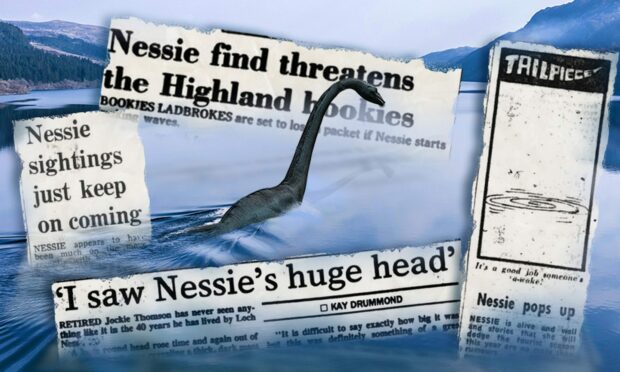
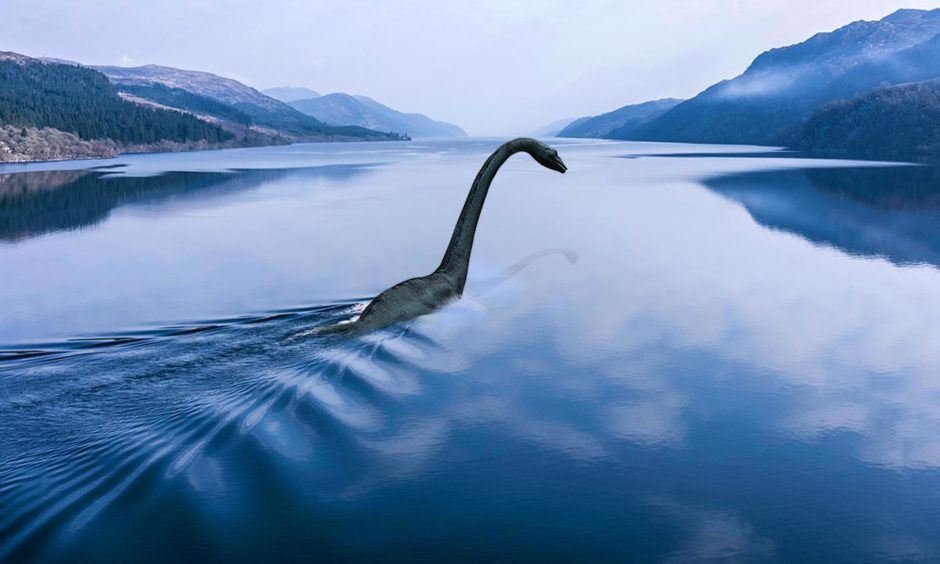
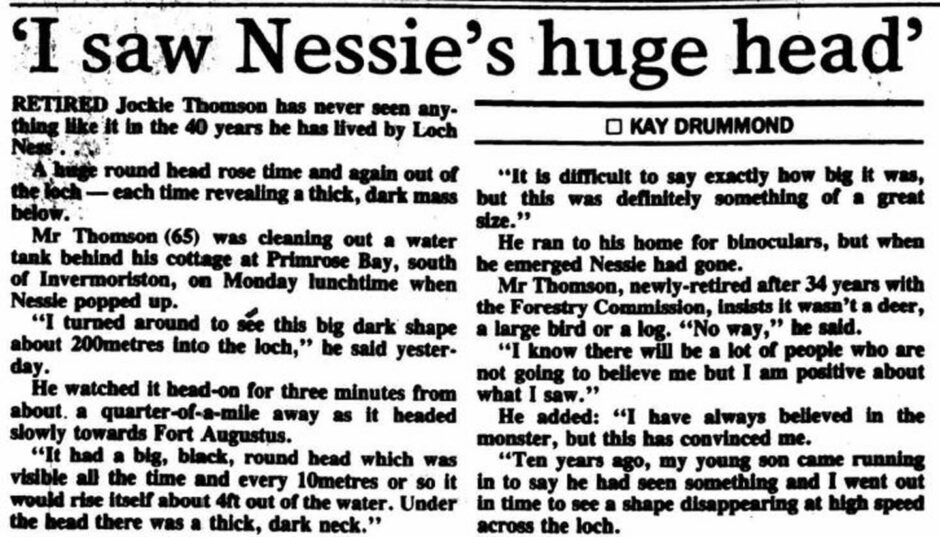
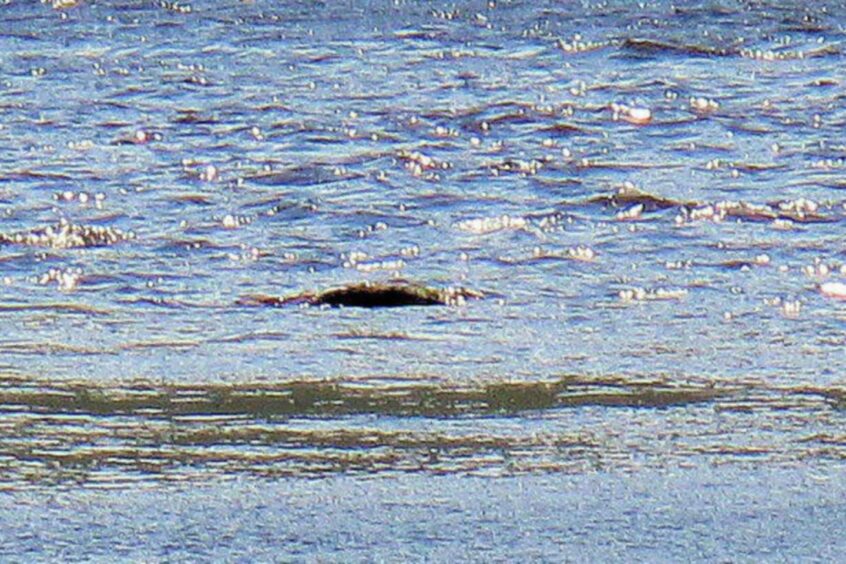
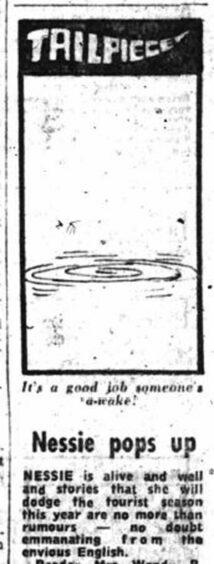
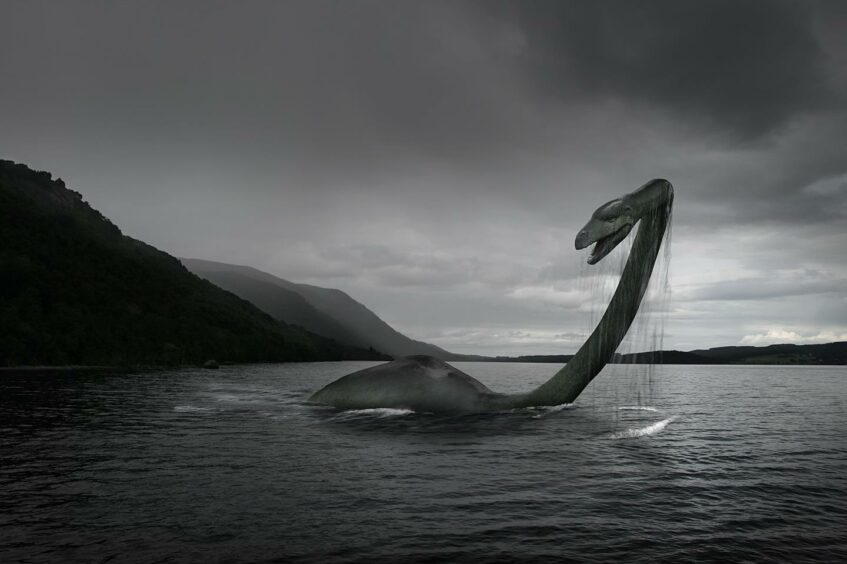
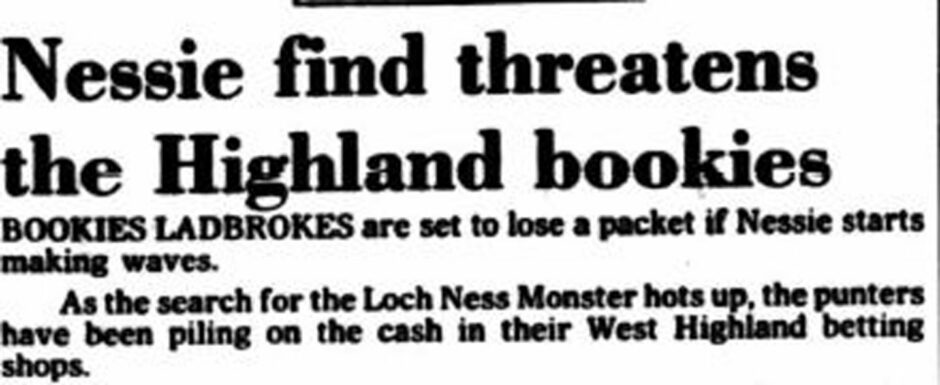
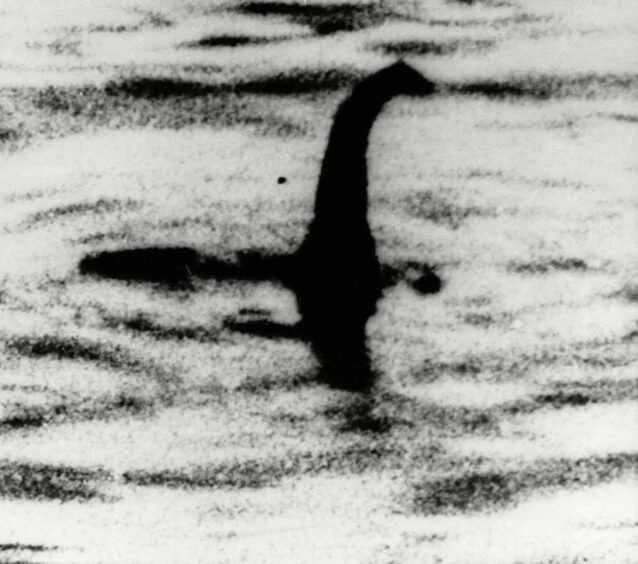
Conversation